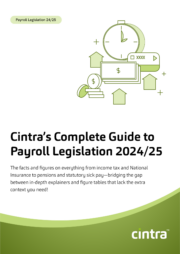In a landmark move, Chancellor Jeremy Hunt has announced in his autumn statement changes to National Insurance rates, in a bid to boost workers incomes and the broader UK economy.
The change to Class 1 NICs
National Insurance is set to see a 2 percent point cut from January 6th, bringing the standard rate down from 12% to 10% for 27 million people.
Rather than beginning from the 2024/25 tax year, the new NI rate will be pushed through as emergency legislation and will take effect from 6th January 2024.
That makes the combined rate of income tax and National Insurance for employees paying the basic rate of tax 30%—the lowest combined basic rate since the 1980s.
What it means for the average worker
The 2% cut will put around £450 back into the pockets of the average worker annually, based on a salary of £35,400, and will impact 27 million people. Average savings look like:
| Salary | Annual savings |
|---|---|
| £25,000 | £245 |
| £30,000 | £345 |
| £35,400 | £450 |
| £50,270 | £750 |
| £100,000 | £750 |
*savings are rounded down and for illustrative purposes only
The change to Class 2 and Class 4 NICs
The chancellor also announced that Class 2 National Insurance—that paid by the self-employed—will be abolished from April 2024. The rate of Class 4 NICs on all earnings between £12,570 and £50,270 will be cut by 1p, from 9% to 8% from April 2024.
What it means for the average self-employed person
The cuts to Class 2 and Class 4 will see an extra £350 in the pockets of the average self-employed person on £28,200, with around 2 million people benefitting from the changes.
Support with the latest payroll legislation
At Cintra, all our solutions are up to speed with the current legislative changes in the world of payroll. Our software and services come with all statutory rates included as standard and receive regular updates to make sure they’re always reflective of the latest changes.
Get in touch to chat about how we can keep your payroll deductions fully compliant, without the hard work.

Payroll Legislation Guide
The facts, figures, thresholds and allowances for 2024/25 spanning tax, National Insurance, pensions, statutory payments and more.
Download now


